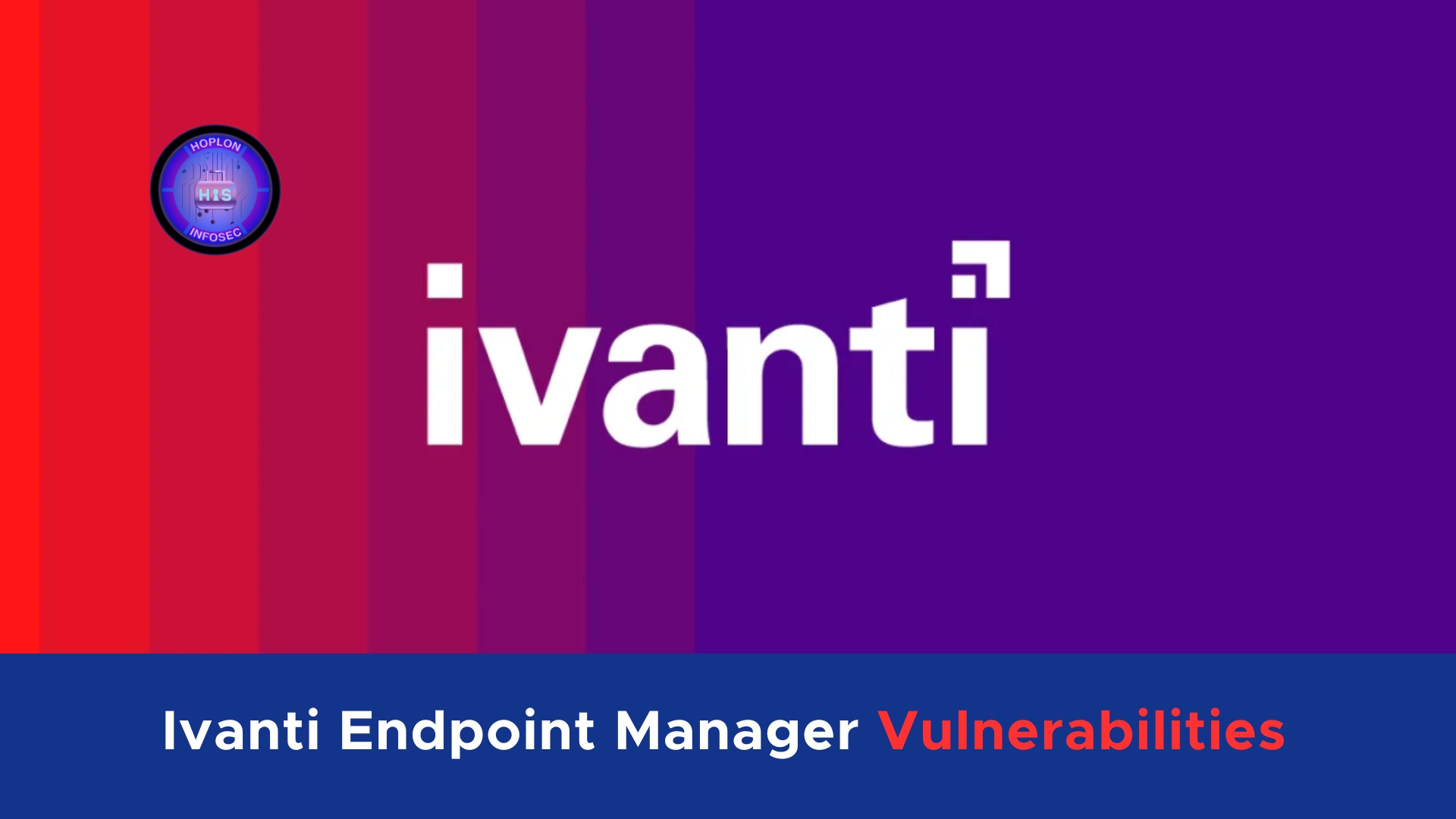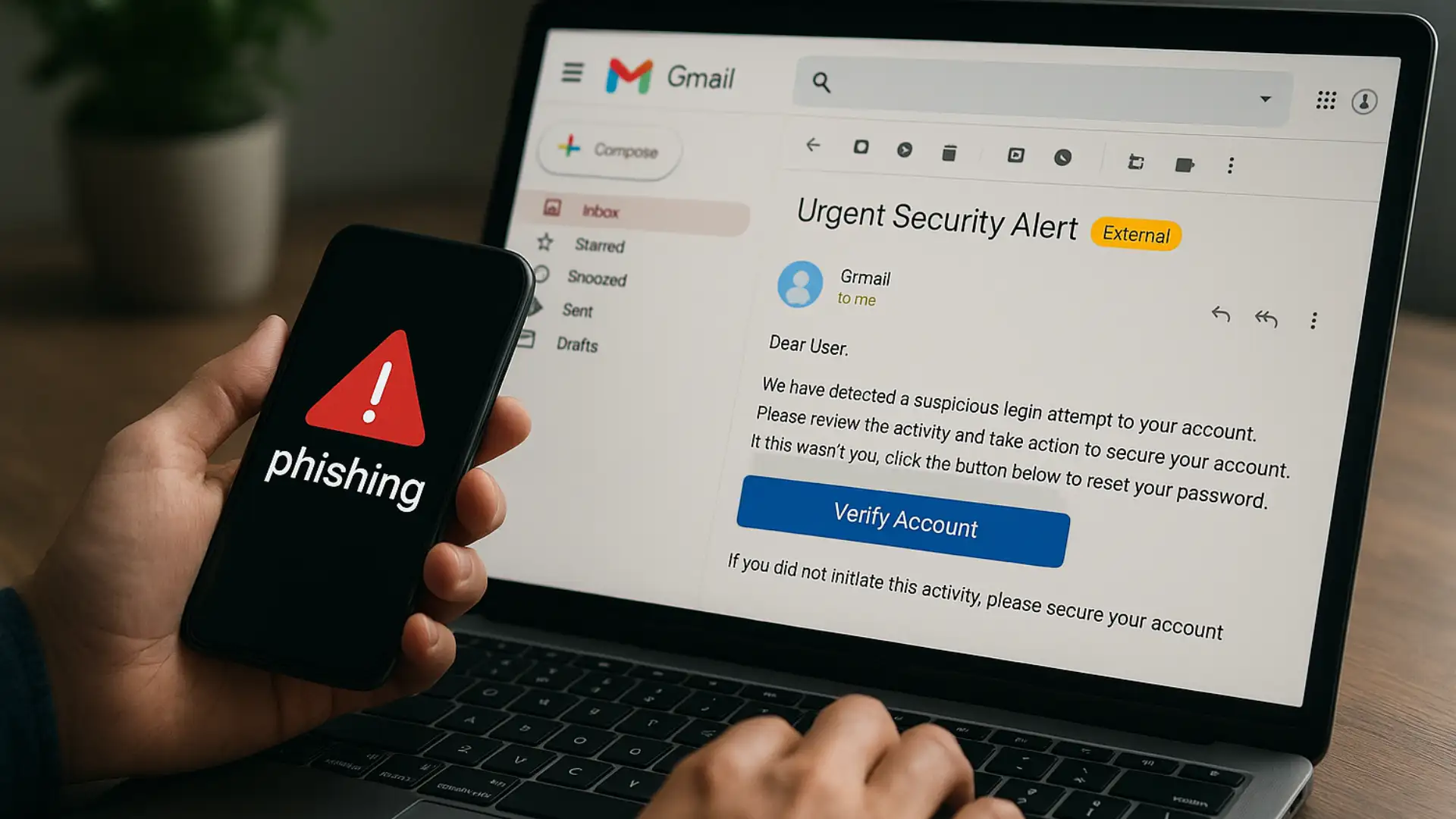In recent months, organizations have been alerted to a cluster of four critical vulnerabilities in Ivanti Endpoint Manager (EPM) that have escalated risks for enterprise device management. Initially discovered by researchers in October 2024 and addressed by Ivanti with patches in January 2025, these vulnerabilities—CVE-2024-10811, CVE-2024-13161, CVE-2024-13160, and CVE-2024-13159—have now taken a dangerous turn with the public release of proof-of-concept (PoC) exploit code. This comprehensive analysis will delve into the technical details behind the vulnerabilities, explore the exploitation chain that could lead to a complete domain takeover, and discuss IT teams’ strategic steps to safeguard their networks.
A Timeline of Ivanti Endpoint Manager Vulnerabilities
The initial discovery of these vulnerabilities in October 2024 set off alarm bells within the cybersecurity community. Researchers identified that the flaws allowed unauthenticated attackers to manipulate EPM servers into exposing machine account credentials. Once compromised, these credentials could be used in relay attacks that grant attackers domain-wide administrative control. Ivanti responded by releasing patches in January 2025; however, the urgency for immediate and comprehensive mitigation has intensified with the subsequent public release of the PoC exploit code.
The discovery and subsequent patching process highlight the delicate balance between responsible disclosure and operational security. The researchers waited 30 days after the patches were made available before releasing detailed technical information, striving to balance the need for public awareness with the risk of enabling malicious actors. Now, with exploit code in the public domain, organizations that have not fully applied the updates are at significant risk.
Technical Background: The Root of the Vulnerabilities

At the heart of these vulnerabilities lies the WSVulnerabilityCore.dll component within the Ivanti EPM’s .NET framework. This module is responsible for various core functions, including file hash calculations—a routine operation that, under normal circumstances, should not pose any security risks. However, a closer inspection revealed several API endpoints designed for file hash computations were not robust enough to validate user-supplied input.
Specifically, functions within the VulCore class—such as GetHashForWildcardRecursive(), GetHashForWildcard(), GetHashForSingleFile(), and GetHashForFile()—are at the center of this security flaw. These functions fail to properly validate the user’s inputs, particularly the parameters associated with file paths. This oversight allows an attacker to inject specially crafted Universal Naming Convention (UNC) paths into the API call.
When an attacker submits a maliciously constructed path, the EPM server inadvertently processes the request by enumerating files, during which it transmits NTLMv2 credentials. This authentication process, designed for legitimate file access, is exploited by attackers to force the server to authenticate against a malicious Server Message Block (SMB) share. In many enterprise environments, the machine accounts utilized in these operations possess elevated privileges—sometimes with full domain-wide administrative rights.
Delving Deeper: How the Exploitation Occurs
The exploitation process involves a carefully orchestrated chain of actions that, when combined, can lead to a catastrophic security breach. The following detailed explanation outlines the technical steps involved in the attack:
Credential Harvesting through UNC Path Injection
Attackers use improper input validation by crafting a path that includes a malicious UNC endpoint. When the EPM server processes the path, it is forced to authenticate to the attacker-controlled SMB share. During this forced authentication, the server transmits its NTLMv2 credentials, which are then intercepted by the attacker using network monitoring and interception tools. This step effectively transforms a benign file-hashing operation into a mechanism for credential leakage.
Exploitation via LDAP Relay Attacks
Once attackers have harvested the NTLMv2 credentials, they can use them in an LDAP relay attack. In such an attack, the stolen credentials are relayed to domain controllers. By exploiting the authentication process, attackers can forge or create unauthorized machine accounts with delegated rights. These rights may allow an attacker to interact with critical directory services if improperly managed.
Escalating Privileges with Kerberos Forgery
With unauthorized access gained through LDAP relay techniques, attackers can turn to forge Kerberos tickets. Tools widely available in penetration testing toolkits enable attackers to create forged Kerberos tickets. These forged tickets effectively impersonate a domain administrator, granting the attacker access to crucial services such as Common Internet File System (CIFS) shares, which are often used for file storage and communication in enterprise environments.
In laboratory demonstrations, researchers showed that chaining these vulnerabilities together allowed them to achieve full domain compromise in as little as 15 minutes after initial access. This rapid escalation mirrors techniques previously observed in campaigns led by advanced persistent threat (APT) groups, raising concerns about the potential for widespread exploitation.
The Challenges of Patch Management and Compatibility
Following the initial discovery, Ivanti promptly released a patch in January 2025. However, the initial update encountered compatibility issues with specific Windows Action components integral to many enterprise environments. As a result, Ivanti had to revise the patch and re-release an updated version on January 17, 2025. Organizations that apply the first version of the patch must ensure that they reapply the updated version to mitigate the vulnerabilities fully.
This incident underscores a common challenge in the cybersecurity realm: the phenomenon of “patch fatigue.” Many IT teams, already burdened by a long list of security updates and legacy issues, may inadvertently delay critical updates—mainly when previous patches have caused compatibility issues or operational disruptions. The evolving security landscape at Ivanti, marked by recent vulnerabilities in its VPN appliances and other products, has only heightened concerns and skepticism among enterprise customers.
Organizational Impact and the Broader Security Landscape

The implications of these vulnerabilities extend far beyond a single technical flaw. The risks are immediate and far-reaching for organizations that rely on Ivanti EPM for device management. A compromised EPM server could provide an adversary with a foothold that escalates into a full-scale domain takeover, jeopardizing every managed endpoint.
Trust and Customer Confidence
The recent security history of Ivanti has significantly strained customer trust. Incidents in 2024, where state-linked actors exploited multiple zero-day vulnerabilities in Ivanti VPN appliances, have left many enterprise clients questioning the robustness of Ivanti’s security measures. Each new vulnerability is now scrutinized through the lens of previous breaches, leading to heightened demands for security assurances and more rigorous patch management practices. Industry analysts have noted that the repeated security challenges create a “patch fatigue” effect. IT teams become overwhelmed by the volume of updates and may delay the application of critical fixes.
Implications for Enterprise Network Security
Beyond customer trust, the vulnerabilities in Ivanti EPM highlight a systemic issue in enterprise management systems. These systems are often granted wide-reaching access to domain controllers and endpoints, making them prime targets for attackers. The inherent high-privilege nature of these platforms, combined with their exposure to the internet, creates an environment where even minor flaws can have disastrous consequences. The vulnerabilities discussed here serve as a potent reminder that every API call or file access request must be designed with a zero-trust mindset—where every request is assumed to be potentially malicious until proven otherwise.
Mitigation Strategies for Enterprise IT Teams
Given the severity of the vulnerabilities, organizations must adopt a multi-layered approach to security that focuses on patching and enhancing overall network resilience. The following strategies outline key steps that enterprise teams should consider:
Immediate Patching and Software Updates
The foremost recommendation is to ensure that all Ivanti EPM servers are updated with the latest patch released in January 2025. Organizations that initially applied the problematic patch should verify that the revised version has been reapplied, as the compatibility issues associated with the earlier patch may leave systems vulnerable to exploitation.
Network Segmentation and Isolation
Segregating EPM servers from other critical network segments can mitigate the impact of a potential breach. By isolating these servers, organizations can restrict their ability to initiate outbound connections—such as SMB or LDAP communications—to untrusted networks. This segmentation limits attackers’ pathways to relaying stolen credentials or forging unauthorized connections.
Credential Hardening and Extended Protection
Given that the exploitation of these vulnerabilities relies on the leakage of NTLMv2 credentials, organizations should consider implementing Extended Protection for Authentication (EPA) on domain controllers. EPA is designed to thwart NTLM relay attacks by providing an additional layer of verification during the authentication process, thereby reducing the risk of unauthorized credential usage.
Robust Monitoring and Anomaly Detection
Proactive monitoring is essential in addition to preventive measures. Security teams should implement detection signatures and integrity verification tools to identify unpatched systems or unusual network traffic. Particular attention should be given to monitoring abnormal LDAP machine account creation events and unexpected SMB traffic originating from EPM servers. Such anomalies can serve as early indicators of exploitation attempts.
Educating and Training IT Staff
Finally, educating IT and security staff on the risks associated with these vulnerabilities is essential. Training programs should cover the technical aspects of the vulnerabilities and best practices for patch management, network segmentation, and incident response. The goal is to foster a culture of security awareness where every team member understands the critical nature of prompt and thorough remediation efforts.
Industry Perspectives and the Road Ahead
Industry experts have weighed in on the implications of these vulnerabilities, noting that the required access of EPM to both domain controllers and endpoints creates a perfect scenario for privilege escalation. Analysts argue that vendors like Ivanti must fundamentally rethink the design of their enterprise management systems. In a world where every API call could potentially be malicious, adopting zero-trust principles is no longer optional—it is a necessity.
The incident has also sparked renewed debates regarding the balance between timely vulnerability disclosure and the risks posed by public exploit code. While responsible disclosure practices are essential for giving organizations time to remediate issues, the availability of PoC exploit code significantly increases the pressure on IT teams to act swiftly. This dynamic underscores the importance of promptly patching systems and maintaining a proactive security posture that anticipates and mitigates potential threats before they can be exploited.
Broader Implications for Enterprise Cybersecurity

The vulnerabilities in Ivanti EPM serve as a cautionary tale for the entire enterprise cybersecurity landscape. In modern networks, where device management systems hold elevated privileges and direct access to sensitive infrastructure, the repercussions of a single vulnerability can be catastrophic. Exploiting these vulnerabilities does not merely affect the EPM server in isolation; it poses a systemic risk that can cascade through the entire network, leading to widespread compromise and operational disruption.
The evolving tactics employed by threat actors—from credential harvesting to LDAP relay attacks and Kerberos ticket forgery—demonstrate a high level of sophistication. These methods, which have been successfully deployed in previous APT campaigns, reveal that the barriers between routine operations and critical security breaches are becoming increasingly blurred. Organizations must, therefore, prioritize a defense-in-depth strategy that combines timely patching, robust network segmentation, and advanced threat detection capabilities.
Conclusion: Lessons Learned and Recommendations
The recent vulnerabilities in Ivanti Endpoint Manager highlight several key lessons for enterprise IT teams and cybersecurity professionals:
- Timeliness is Critical: With the public release of PoC exploit code, the window for potential exploitation has narrowed significantly. Immediate patching and verification of updates are essential to prevent attackers from gaining a foothold in the network.
- Adopt a Zero-Trust Mindset: Given the elevated privileges that enterprise management systems require, every component—from API endpoints to file access operations—must be designed with security as a foremost consideration. Zero-trust principles should guide every aspect of system architecture and network segmentation.
- Enhance Monitoring and Incident Response: Early detection of anomalies, such as unusual SMB or LDAP traffic, can differentiate between a minor security incident and a full-blown breach. Investing in advanced monitoring tools and training staff on incident response protocols is imperative.
- Mitigation Is a Multi-Layed Effort: No single solution will suffice to protect against complex threats. Instead, organizations must adopt a comprehensive approach that combines immediate technical fixes with longer-term strategic changes, ranging from network segmentation to credential hardening.
- Learn from Past Incidents: The vulnerabilities in Ivanti EPM add to a growing list of security challenges faced by the vendor in recent years. Drawing on lessons from past incidents, organizations should re-evaluate their risk management strategies and demand more rigorous security assurances from their technology providers.
Addressing these critical points can help organizations better defend themselves against sophisticated attack chains that exploit seemingly routine operations. The Ivanti EPM vulnerabilities underscore that in today’s threat landscape, complacency is not an option, and proactive security measures are essential to protecting the integrity of enterprise networks.
Ultimately, the incident serves as a wake-up call for vendors and customers. Vendors must invest in building more secure and resilient systems, while organizations must remain vigilant, continuously updating their defenses in response to evolving threats. With coordinated efforts and a commitment to best practices in cybersecurity, the risks posed by such vulnerabilities can be mitigated, ensuring that enterprise management platforms remain a trusted component of modern IT infrastructures.
Final Thoughts
In an era where cyber threats are constantly evolving, the case of Ivanti Endpoint Manager’s critical vulnerabilities serves as a stark reminder of the challenges inherent in managing complex enterprise systems. As malicious actors refine their techniques—exploiting everything from minor input validation errors to leveraging full-blown privilege escalation attacks—it is incumbent upon every organization to review its security posture, stay informed about emerging threats, and invest in the tools and practices to keep its networks secure.
By understanding the technical nuances of these vulnerabilities and implementing the recommended mitigation strategies, organizations can safeguard their current environments and build a more resilient framework for the future. The path forward requires immediate action, continuous monitoring, and long-term strategic planning—a triad essential in the ongoing battle against cyber threats.
As enterprises continue to navigate the complex landscape of digital transformation and cybersecurity, the lessons learned from the Ivanti EPM vulnerabilities will undoubtedly shape the development of more secure, reliable, and resilient management systems. By focusing on proactive defense, collaborative security practices, and a zero-trust approach, organizations can better prepare themselves for the challenges ahead, ensuring they remain one step ahead of potential adversaries.
For more:




